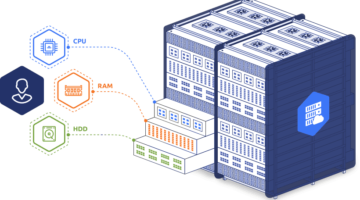What does a fridge that orders groceries, a self-driving car, and pants that track your activity levels have in common? They’re all card-carrying members of the IoT. Standing for the Internet of Things, the IoT is a network of devices that can interact with each other by exchanging data via the Internet.
With each new smart home, wearable gadget, and mobile wallet, the landscape of the IoT is rapidly changing as more enabled devices join its network. Those excited by the possibilities of an extensive IoT look to the future in anticipation. Here are just three predictions of what’s in store.
- DDoS attacks will be on the rise
We’re coming up to the second anniversary of the very first IoT malware event. On October 21, 2016, Dyn, one of the largest DNS servers suffered a DDoS (Distributed Denial of Service) attack. You could call it the day the Internet stood still, as some of the biggest websites were affected. These sites showed “unable to reach server” pages when users attempted to visit them. At first, the attack was initially claimed by infamous hacktivist groups like Anonymous and New World Hackers, but three unaffiliated gamers pled guilty to creating the malware.
As one of the most extensive DDoS attacks, its cyber reach was lengthened by the IoT. This kind of attack is known as a botnet, which involves a collection of connected devices controlled by a hacker. This particular attack relied on the Mirai malware to remotely target unlikely devices like security cameras, DVRs, routers, and smart locks operating on the Linus system. It then took control of these devices to overwhelm the DNS servers with requests.
Though Dyn eventually recovered, the Mirai botnet source code was published on the Internet. To this day, anyone with a bit of know-how and a lot of nefarious intent can access this code. They can either improve it, like those who revised version of the Mirai to attack Windows devices, or they can use it to launch their own DDoS attacks. According to TrendMicro Research, a week-long DDoS only costs $150 on the black market, while a month-long attack is $1,200.
The ATLAS Digital Attack Map shows more than 2,000 DDoS attacks occur around the world, responsible for one-third of all Internet downtime. As the ease and effectiveness of these attacks continue to improve, it’s likely DDoS-related incidents will rise.
- More connected devices may phase out the smartphone
Admittedly, this is a daring prediction at a time when most people refuse to leave home without their smartphones. This handset, if not directly in your hands, is almost always nearby nestled in a back pocket or bag.
Let’s take a look at the iPhone X. It’s a coveted piece of tech that people lined up to buy and personalize with iPhone skins. Unique skins from dbrand are just as much status symbols as the iPhone X itself, as are other official Apple-endorsed accessories.
For many reasons, this symbol owes its high status to the IoT. As greater connectivity encouraged better web browsing and apps, the smartphone’s functions grew beyond its initial call and text abilities. It’s now an entertainment system, library, music player, gaming console — and much more!
However, the evolution of the IoT is set to disrupt the smartphone’s role once again. As tech giants like Google, Apple, and even Facebook improve their AI and augmented reality programs, they’re creating a new line of IoT-enabled devices that could assume many of the individual tasks taken on by the smartphone. If successful, their work could disassemble the smartphone into its individual tasks and redistribute their duties to previously dumb objects made smart by the IoT.
Two years ago, in the Ericcson’s Internet of Things Forecast, the telecommunications company predicted IoT devices would surpass smartphones as the most-used tech by 2018. By 2022, they expect 16 billion out of 28 billion connected devices will be IoT sensors or devices compared to just 9 billion smartphones.
A lot can happen in four years. While it’s unlikely that smartphones will pop out of existence all at once, there is a strong case for a slow decline in their usage as other connections to the IoT arrive. Until IoT network includes a greater ecosystem of devices, the smartphone will remain the best personal connection to the IoT.
- It will rely increasingly on 5G
5G, shorthand for the fifth generation, represents an emerging wireless technology used by IoT devices. As its name suggests, it’s the fifth iteration of cellular tech that follows after 2, 3, and 4G. It promises greater connectivity across enabled devices, faster data transfer speeds, and better response times. PC Mag’s Sascha Segan provides a simple look at the data architecture that makes 5G the way it is, and it’s a great way to learn more about the intricacies of this newest cellular network.
According to Ericcson’s Mobility Report from June 2018, 5G networks marks the future of cellular IoT connections. Their key findings show the first 5G data-only devices will arrive by the end of their year, while the first commercial smartphones supporting 5G will arrive in early 2019. By 2023, their report estimates there will be 1 billion 5G subscriptions.
Efforts to actualize these predictions are already well underway. Verizon and AT&T are working rapidly to bring 5G to residential areas, and they’re using their rivalry to quicken the process. Verizon hopes to have 5G residential access in three out of five of its markets by 2018, while AT&T expects to bring 5G to a dozen cities in its first wave of installation.
These three predictions are only just that. Though they’re educated estimates based on the latest forecasting data, the future of IoT relies on a constantly evolving platform. As the connections between IoT devices become faster, its network will grow exponentially. The number of connected devices and people will have a direct impact on the IoT’s evolution. Only time will tell how these and other IoT trends will be affected.







